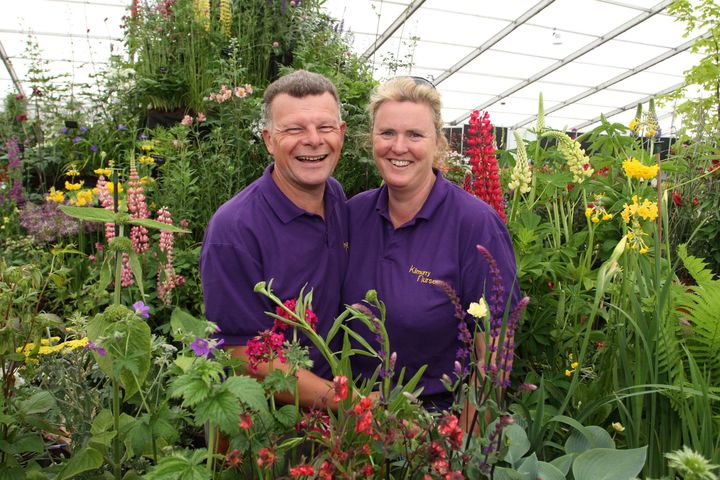
Along with nearly all growers of ornamental plants, they used to use peat-based compost. Peat is a wonderful material for growing plants in. It holds on to moisture and nutrients well, and it’s lightweight for transporting.
The peat has, by and large, come from our bogs or those of some European neighbours. These bogs are an oasis of life, full of biodiversity, both flora and fauna. They also act as carbon banks, holding on to it when they are wet but releasing it when they dry out and are cut for peat.

And we’ve dried out a remarkable number of these bogs, often to burn the peat for heat in our homes or to fuel power stations. We’ve been slow to realise that it is important that these natural habitats are saved for future generations. Realising the damage being done as a result of its mass extraction, Paul and Orla Woods of Kilmurry Nursery decided to innovate — to lead the way by going peat-free.
And, recently, I visited to see how the change was going. Paul Woods told me the process hasn’t been straightforward or easy. Known for producing quality plants, it was a challenge for the family to find an alternative growing medium that would produce the same excellent product.
Four different products were trialled for a year. The products were pretty similar — mostly a mix of composted bark of different sizes and a wetting agent. The new peat-free composts didn’t hold on to nutrients as well as peat, so trials of new mixtures of slow-release fertiliser were required.
It was a very time-consuming exercise and resulted in Kilmurry opting for a peat-free compost made by ICL. They experienced large losses over the first year as they tried to understand the limitations of the new compost’s ability to store moisture. The result meant that the nursery’s irrigation systems were adapted to water the stock more regularly, but with less water each time.
The final result is that Kilmurry has proved it’s possible to grow garden plants on a large scale in peat-free compost while retaining an excellent end product. This is an enormous and encouraging change for the gardening industry. However, it’s been noticeable how few consumers have demanded the change or applauded the move.
A few have embraced it, while others are still dubious. Woods thinks more should be done to tell the story of the change the industry is making. “I don’t think there has been enough information relayed to the public in a way that they can understand any of the technical details, and the importance of not using peat has not been absorbed by the general public.
“We have no issues with supply as we are the only completely peat-free grower in Ireland that uses ICL, but if all the growers changed from peat tomorrow, there would not be enough raw material to supply the industry. “The industry will realise eventually that they will have to change completely to peat-free. They are growing in reduced peat at the moment, but most will not change until they are pushed into it as it is more expensive and more difficult to grow in peat-free”.
My agapanthus were delayed this year, perhaps due to a lack of sunshine. But now they are exploding like blue fireworks. Also known as African lilies, they are perfect for containers as they are happy for their root system to be quite snug.
They will still need dividing after a few years as they can become over-constricted. Lots of sunshine and water during the growing season keeps them happy. The spherical flowerheads also come in white and purple.
Feed regularly in spring with high potash feed for maximum flower power. Yes, it’s possible. As a deciduous shrub, it is best moved when dormant — this means from November on when the leaves have dropped and it is asleep for the winter.
Dig a wide trench around the rose as you want to get as much of the rootball as possible without damaging the roots. Dig a similar-sized hole, add some well-rotted manure and replant the rose, watering it in well..














